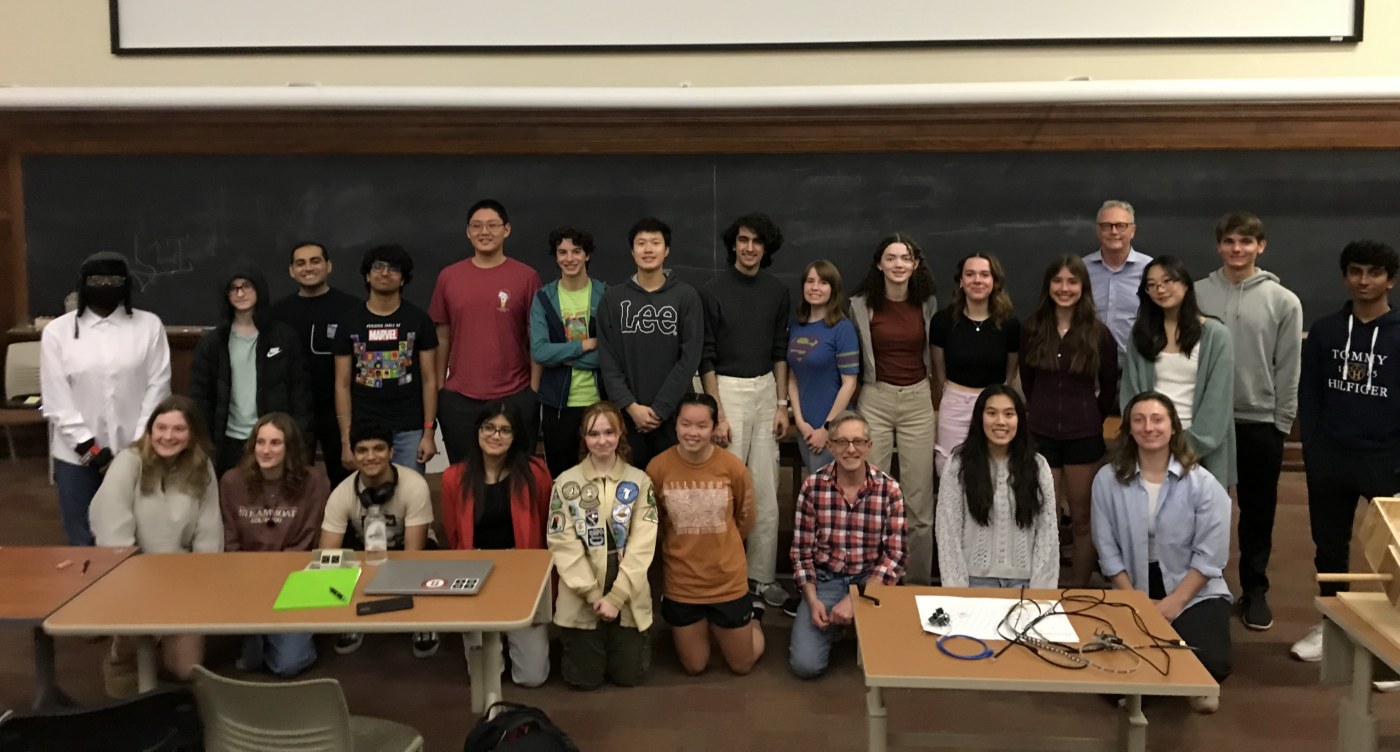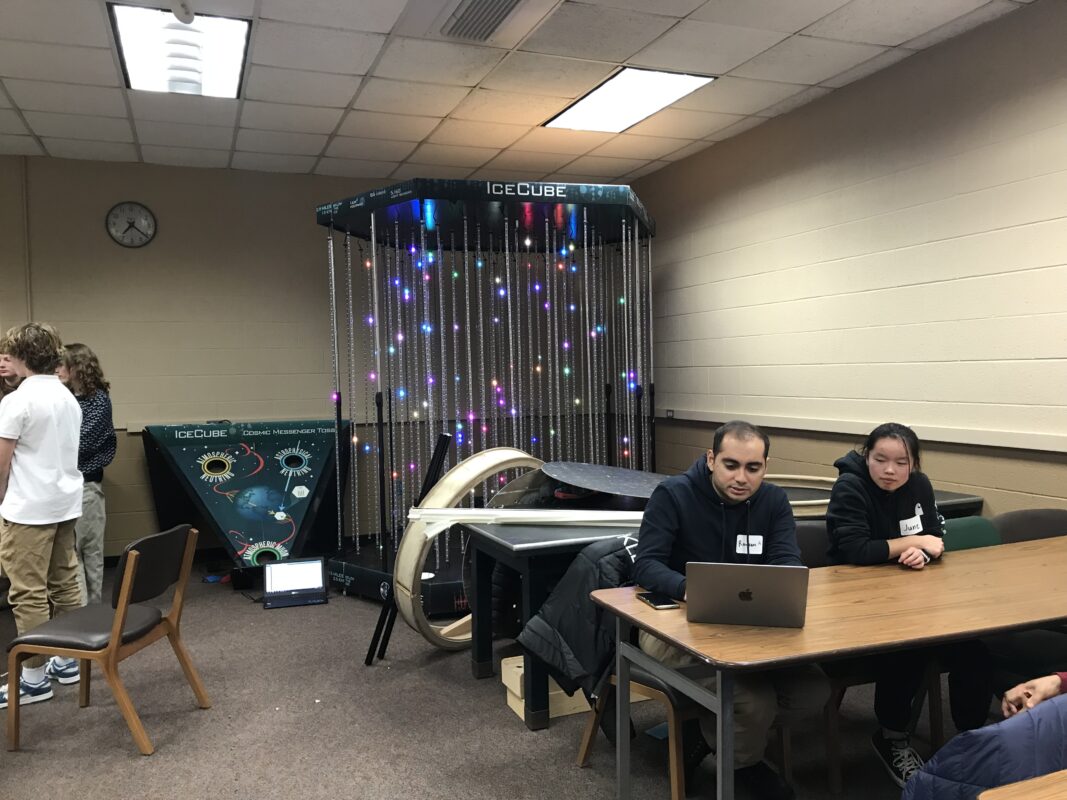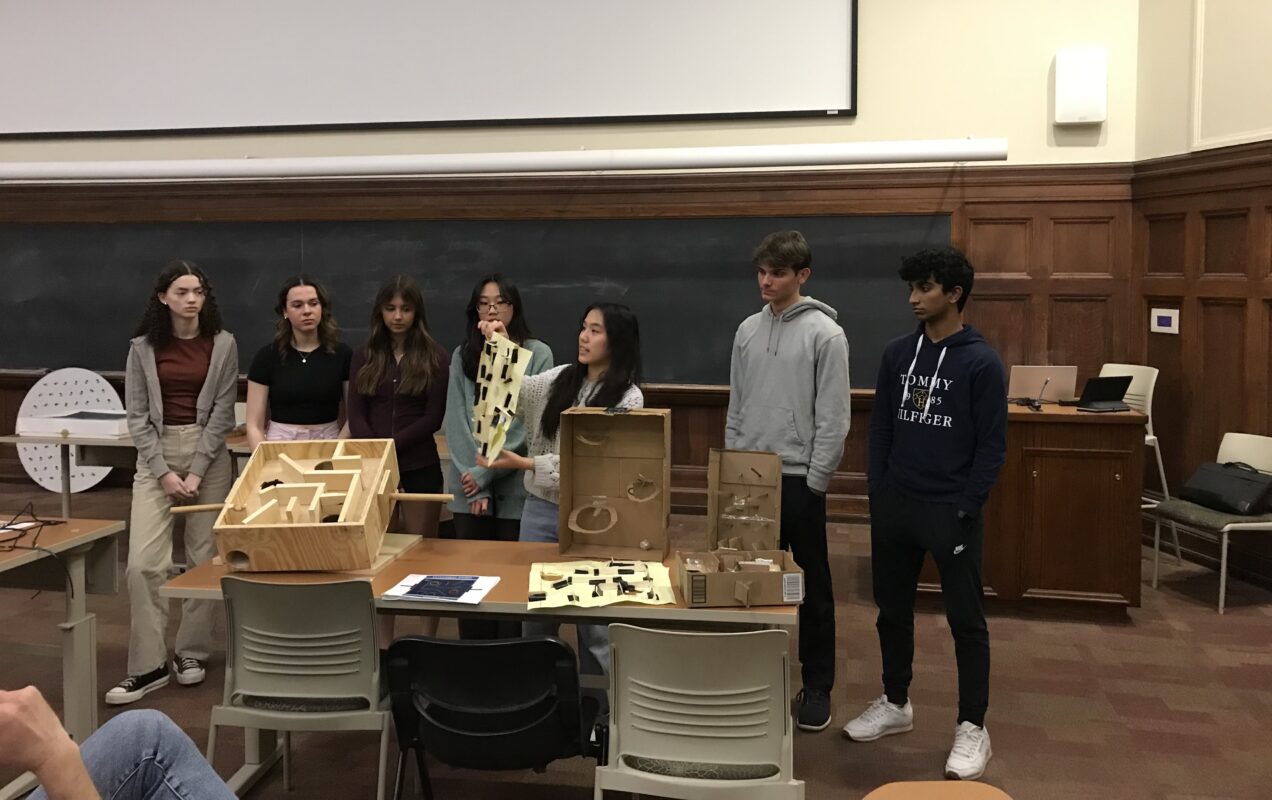
Last week, 23 participants and their family members gathered for an evening of presentations and cake as part of IceCube After School, an eight-week program hosted by the Wisconsin IceCube Particle Astrophysics Center (WIPAC). Since 2013, the annual program introduces local high school students to WIPAC research and the people who make it possible. For the first time in the program’s history, WIPAC partnered with the University of Wisconsin–Madison (UW–Madison) Physics Department and their Outreach Fellows program. The outreach fellow volunteers were essential to the success of the program.

Participants broke into four working groups focused on different aspects of the project: hardware, software, computer-aided design, and user interaction. Led by graduate student volunteers and WIPAC staff, each working group made significant progress on their tasks, learning new skills and concepts along the way.

“Watching the participants collaborate and democratically come up with unique ideas to prototype each week was amazing,” says Zoë Rechav, a UW–Madison physics PhD student who volunteered for the program. “They arrived at a near-finished prototype by the end that I and my colleagues are excited about.”
The program also included talks from guest speakers who introduced the participants to IceCube science, their research, and how they got into physics.
Once the model is completed, it will be installed in the Ingersoll Physics Museum in Chamberlin Hall at UW–Madison, where it will be available for viewing by the public and school groups.
“We are excited to have partnered with the Physics Department and their outreach fellows this year,” says Ellen Bechtol, outreach specialist at WIPAC who helps organize and run IceCube After School. “Installing the LED model in the Ingersoll Physics Museum this spring for all to enjoy will be a happy culmination of our work, and I hope participants will visit the exhibit and feel proud of their contributions.”
